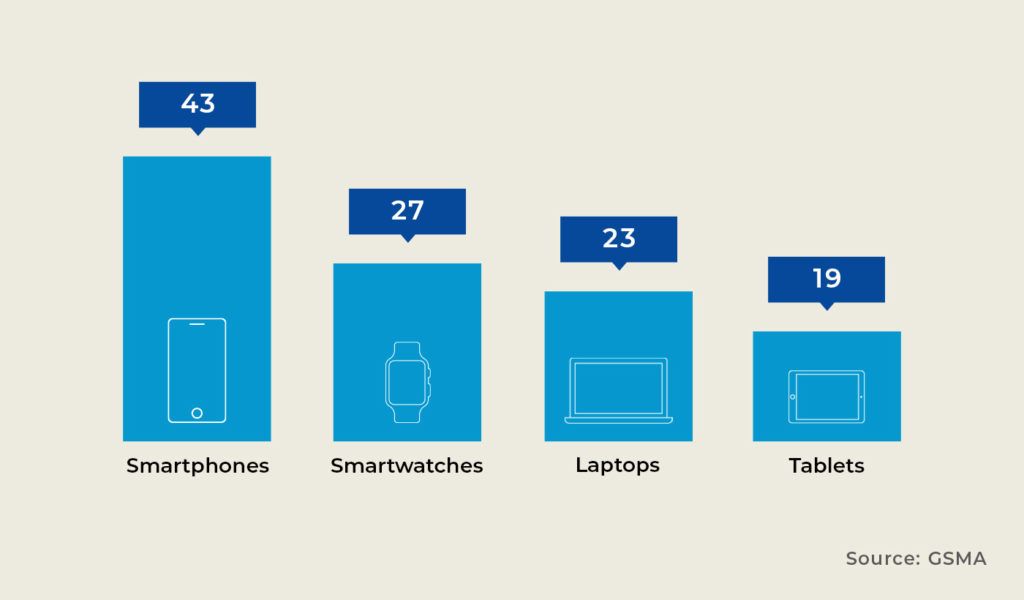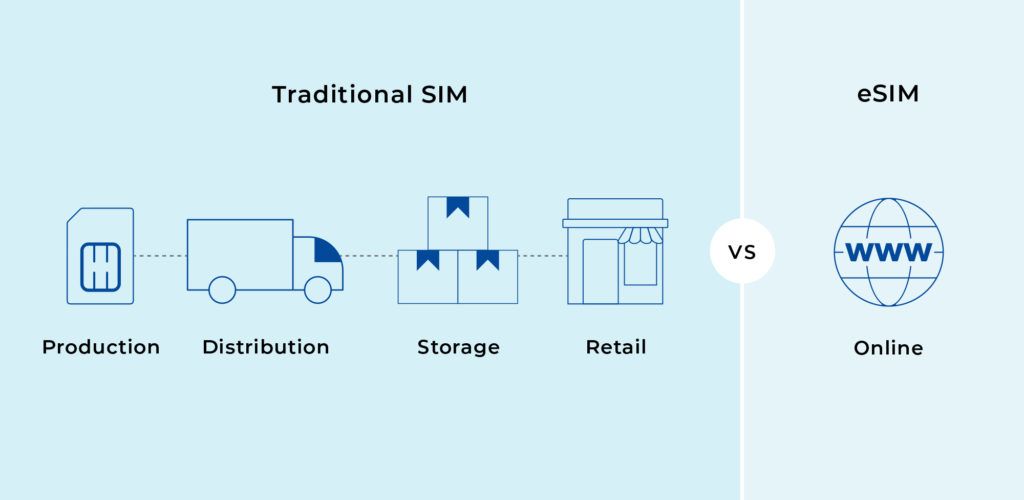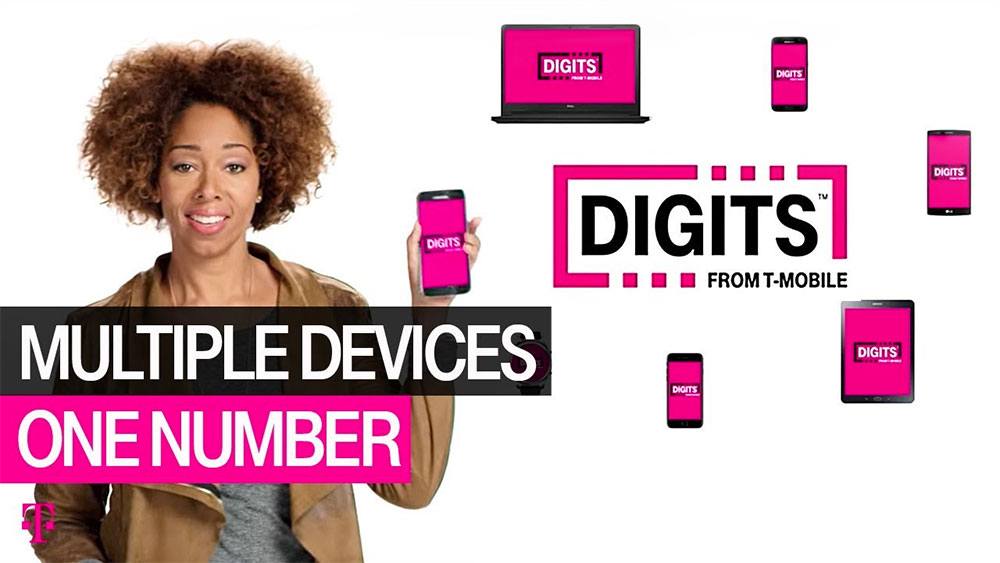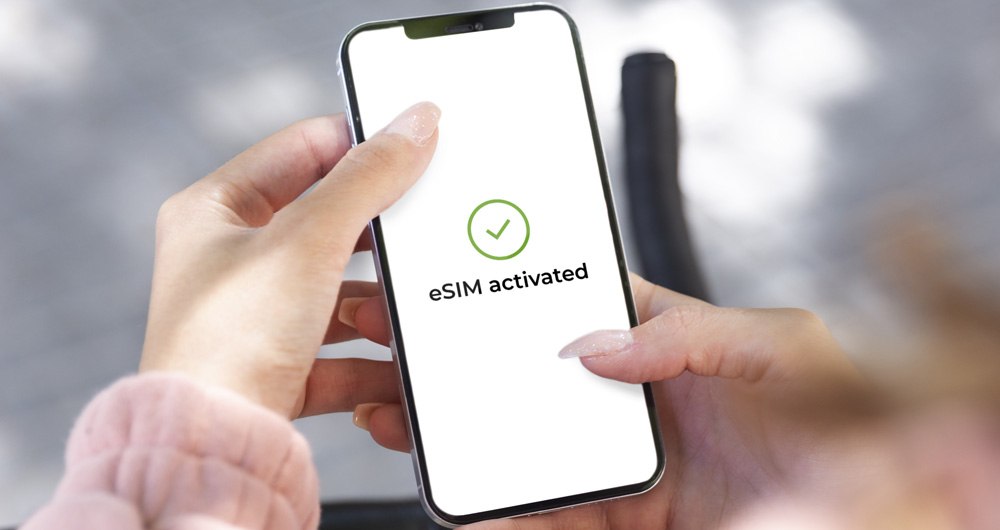According to a publication by the GSMA, eSIM: State Of The Consumer Market And The Road Ahead, there will be 2.4 billion eSIM smartphone connections by 2025. Additionally, Polaris Market Research says the global eSIM (embedded subscriber identity modules) market is expected to grow to $21.87 billion by 2028, growing at a compound annual growth rate of 15.7% from 2021 until 2028.
From its last count, the GSMA estimates that over 220 mobile network operators are working with an eSIM provider and already selling eSIM subscriptions. By 2023 and 2025, 88% and 98%, respectively, of operators surveyed by GSMA Intelligence plan to offer eSIM services. This proves that the consumer market is moving inexorably towards widespread eSIM adoption. The next-generation SIM technology is growing fast and this September’s iPhone 14, the first eSIM-only smartphone by Apple, is expected to propel this trend.
Device makers or original equipment manufacturers (OEMs) are gradually incorporating eSIM devices into their production plans, as evidenced by the proliferation of eSIM devices. Enterprises are also turning to M2M eSIM solutions and developments in the M2M and IoT standards made by the GSMA are designed to foster this migration.
Devices incorporating eSIM

It is clear market adoption is expected to accelerate in the following years. That said, some mobile network operators might still be weighing the pros and cons of eSIM and wondering how adopting eSIM technology will affect their bottom line.
Going fully digital
The ease with which subscribers can switch carriers virtually without messing about with a physical plastic SIM is one of the most acclaimed features of eSIM. Some operators are already fully embracing digitisation and user convenience by providing a completely digital onboarding experience where users can choose their preferred provider plan, and then register and pay for it online via a website or mobile app.
Custom discovery services

In these scenarios, consumers don’t need to visit a retail branch or any shop to sign up for a mobile plan. Their eSIM device retrieves the information on the available network and tariff. And for iOS users, Apple also offers the users to choose from a universal discovery server (Apple Lookup) and download the preferred network provider’s SIM profile. The GSMA Root Discover Service also promises to offer a similar service for all devices.
Apple Lookup Service

eSIM allows telcos, particularly those without a large physical brand presence, such as having a nationwide chain of their own retail outlets and distribution agreements without retailers, to cast a much wider net, opening up customer acquisition channels in areas where they had no prior reach because of financial constraints and the need for a brick-and-mortar presence. In this way, eSIM is a great enabler for smaller MNOs and MVNOs, and a great leveller up as through digital means they can quickly establish strong market awareness.
The chance to digitalise customer acquisition is also an opportunity all network operators can exploit. If a telco can flawlessly execute a digital customer acquisition plan, they offer end-users a highly convenient service at significantly lower costs per user than traditional subscriber acquisition through the traditional plastic SIM. This can mean a win-win for everyone; happier customers, improved ARPU (Average Revenue Per User) for the telcos and greater market share.
eSIM: the solution to the chip shortage
During the COVID-19 pandemic, SIM card manufacturing factories and printers of SIM card packaging and associated collateral closed or dramatically curtailed their production. Warehouses also had to close or downsize operations significantly, while transport companies carried less cargo, driving up transport prices. MNO offices, stores and their distribution partners also had to close shop, or severely reduce capacity. The COVID-19 pandemic demonstrated how vulnerable MNOs are to worldwide supply chain disruptions. But some may say that wasn’t the worst of it for telcos as the global chip shortage has decreased physical SIM supply and driven up costs sharply to the point that in some cases eSIM is already a more cost-effective alternative.
eSIM and digitalisation can protect telcos’ operations against similar turmoil and can reduce their manufacturing and transportation costs and shield them from future supply chain disruptions. There is also a huge amount to be said about eSIM and how it can help significantly help network operators increase their sustainability and reduce their impact on the environment.
How eSIM changes a telco’s supply chain

More devices, more retention, more revenue
As eSIM, goes way beyond just the traditional mobile phone and enables connectivity in devices that previously didn’t exist. Whether it’s laptops, smart watches, health monitors, asset trackers or vehicles, eSIM opens up new markets including the chance for telcos to offer subscribers all-in-one services for their multitude of connected devices such as one number. Not only will this increase average revenue per user, this should also improve customer retention.

eSIM: the enabler for the agile
eSIM, as a digital enabler, offers telcos of all sizes a more level playing field allowing faster market growth, protection from supply chain disruptions, enhanced service, increased customer satisfaction, improved customer retention and increased sustainability. To accomplish this, however, telcos must be able to develop an eSIM market strategy that affords them security, reliability, scalability and ultimately, a strong return on investment.
Workz offers the first GSMA-certified eSIM management cloud platform as part of its suite of next-gen eSIM solutions.
1st certified eSIM cloud includes regional hosting options

Learn how we are helping telcos grow their customer base and revenues faster, easier, and more affordably. Contact us today to discuss your eSIM strategy.


